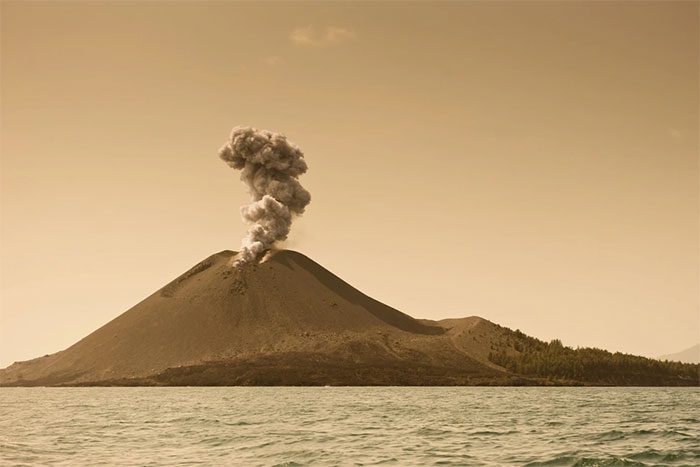A phantom island off the coast of Sicily, created by the underwater volcano Empedocles, Ferdinandea Island (also known as Graham Island or Julia Island depending on the naming convention of different nations) has emerged above sea level three times.
In the past, this island surfaced the first time in 1701, the second time in 1831, and the last time in 1863. Today, it rests 8 meters below sea level.
When it appeared for the second time in 1831, the island located between Italy and Tunisia had a circumference of 5 km and rose approximately 65 meters above the sea. This emerging island was formed from a submerged volcanic island, continuously pushing lava from the volcano’s mouth.

The volcanic island off the coast of Sicily has emerged above sea level three times. (Photo: Science post).
When the lava ceased to erupt, seawater seeped into the island, forming two saline water bodies, from which the warmth helped release steam.
This steam became charged with hydrogen sulfide and iron sulfate, giving the water a reddish hue. Ferdinandea Island quickly eroded under the impact of ocean waves, its circumference and height gradually shrinking over time until it completely vanished.
During its second emergence, the Neapolitans renamed it Ferdinandea in honor of Ferdinand II, the King of the Kingdom of the Two Sicilies. Previously, the island was named Prosperine and then Sciacca, referring to the port of the same name.
In the same year, British Captain Humphrey Fleming Senhouse renamed the island Graham Island in honor of James Robert George Graham, the first Secretary of the Admiralty, a governing body of the Royal Navy.
Subsequently, French exploration teams led by geologist Constant Prévost renamed it Julia Island, relating to the July Monarchy and the month of its appearance.
Long-standing Sovereignty Disputes
Although Ferdinandea is now considered an island of Italy, its sovereignty has been contested, especially when it emerged in 1831. The Kingdom of the Two Sicilies, France, Britain, and Spain had multiple nations claiming sovereignty over this small volcanic land, leading to a diplomatic crisis.
It is worth noting that at that time, the British occupied the Maltese archipelago, the French settled in Algeria, and the Spanish had long inhabited the western Mediterranean region.
In August 1831, the crew led by Admiral Humphrey Fleming Senhouse declared the island to be British property.
In response to this declaration, King Ferdinand II of Naples ordered the British flag replaced with that of the Kingdom of the Two Sicilies. A month later, the French also claimed sovereignty over the island by hoisting their national flag there.
The territorial claims did not cease until January 1832, after which the island rapidly eroded until it was completely consumed after six months of existence.
Continuous Claims of Sovereignty
Sixty years after the initial appearance of Ferdinandea, territorial claims were again made by various countries in 1863; however, possession from these nations quickly ceased due to erosion that completely destroyed the island.
One hundred years later, the question of the island’s sovereignty arose again in the 2000s, following a mild seismic activity observed in the volcanic region. Italy was then the first country to hoist its flag there.
In 2001, Sicily placed a marble plaque to assert its sovereignty, which was discovered to be broken six months later, inscribed with the words: “This land, formerly Ferdinandea, has belonged to and will always belong to the Sicilians.”


















































